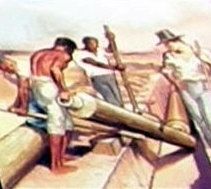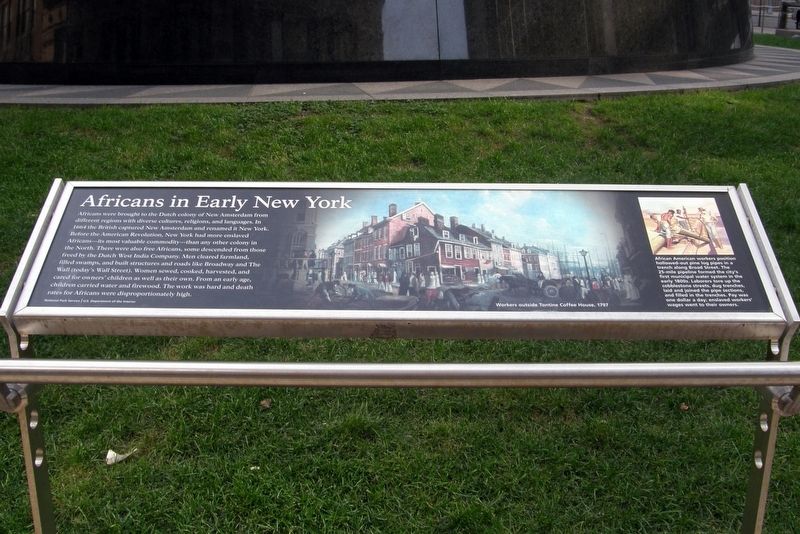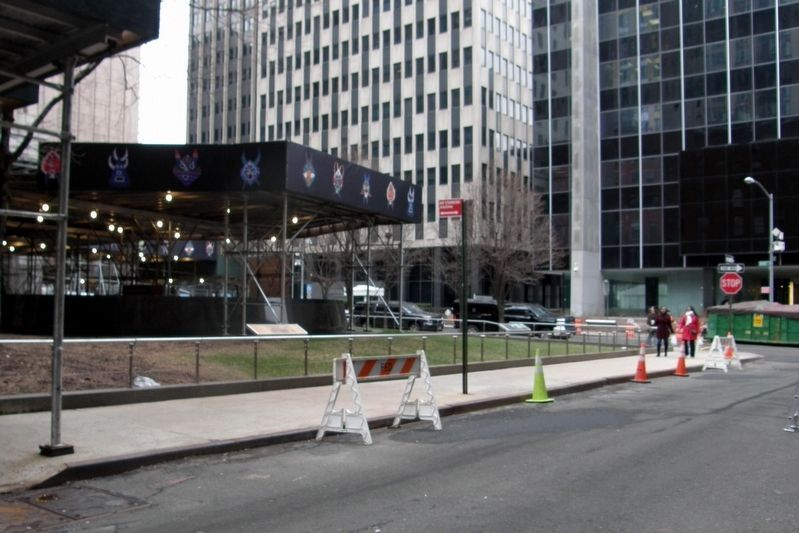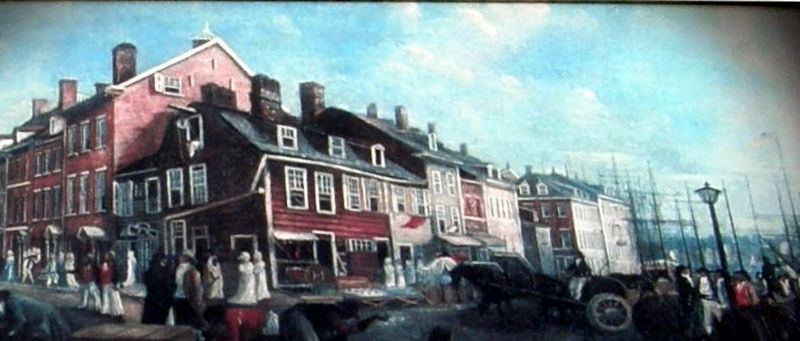Civic Center in Manhattan in New York County, New York — The American Northeast (Mid-Atlantic)
Africans in Early New York
Africans were brought to the Dutch colony of New Amsterdam from different regions with diverse cultures, religions, and languages. In 1664 the British captured New Amsterdam and renamed it New York. Before the American Revolution, New York had more enslaved Africans – its most valuable commodity – than any other colony in the North. There were also free Africans, some descended from those freed by the Dutch West India Company. Men cleared farmland, felled swamps, and built structures and roads like Broadway and The Wall (today’s Wall Street). Women sewed, cooked, harvested, and cared for owners’ children as well as their own. From an early age, children carried water and firewood. The work was hard and death rates for Africans were disproportionately high.
Erected by National Park Service/U.S. Department of the Interior.
Topics. This historical marker is listed in these topic lists: African Americans • Cemeteries & Burial Sites • Colonial Era. A significant historical year for this entry is 1664.
Location. 40° 42.866′ N, 74° 0.25′ W. Marker is in Manhattan, New York, in New York County. It is in Civic Center. Marker is on Elk Street near Duane Street, on the left when traveling east. Touch for map. Marker is in this post office area: New York NY 10007, United States of America. Touch for directions.
Other nearby markers. At least 8 other markers are within walking distance of this marker. Changing Landscape Obscures the Past (a few steps from this marker); Sacred Tradition, Sacred Ground (a few steps from this marker); African Burial Ground (a few steps from this marker); "Sankofa" (within shouting distance of this marker); African Burial Ground National Monument (within shouting distance of this marker); Foley Square c. 1730 (within shouting distance of this marker); Judge Walter R. Mansfield Memorial (within shouting distance of this marker); Foley Square c. 1800 (about 300 feet away, measured in a direct line). Touch for a list and map of all markers in Manhattan.
More about this marker. Elk Street and this stretch of Duane Street have been closed to through automobile traffic since 9/11.
Regarding Africans in Early New York. The monument is listed in the "AIA (American Institute of Architects) Guide to New York City, Fifth Edition".

Photographed By Larry Gertner, October 10, 2011
4. Inset
African American workers position hollowed-out pine log pipes in a trench along Broad Street. The 25-mile pipeline formed the city’s first municipal water system in the early 1800s. laborers tore up the cobblestone streets, dug trenches, laid and joined the pipe sections, and filled in the trenches. Pay was one dollar a day; enslaved workers’ wages went to their owners.
Credits. This page was last revised on January 31, 2023. It was originally submitted on February 15, 2019, by Larry Gertner of New York, New York. This page has been viewed 399 times since then and 52 times this year. Last updated on February 15, 2019, by Larry Gertner of New York, New York. Photos: 1, 2, 3, 4. submitted on February 15, 2019, by Larry Gertner of New York, New York. • Andrew Ruppenstein was the editor who published this page.


